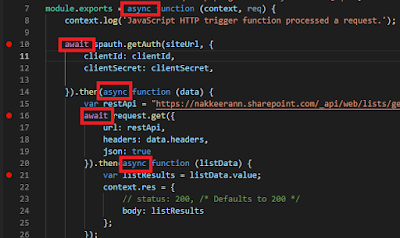Let us look how we can leverage the power of azure cloud storage, and integrate data into Office 365 SharePoint. In this article, we will use serverless WebJobs to push the data into Office 365 SharePoint online, whenever new content is added to storage systems like queues and blobs.
Scenario: Azure cloud storage system is used as centralized platform for storing/publishing the content. Office 365 SharePoint to get the content, whenever the data is available on the cloud storage.
Azure webjobs can be used for pushing the data to SharePoint systems/applications. We will be using Azure Webjob SDK framework, which has necessary triggers for queues and blobs, to trigger the content whenever it is available. We will be using OfficeDevPnp core libraries on Azure webjobs to integrate the data into Office 365 SharePoint.
This article explains trigger events for both queue and blob, present on Azure storage. But based on your requirement, you can select any of the storage.
The prerequisites required are,
Scenario: Azure cloud storage system is used as centralized platform for storing/publishing the content. Office 365 SharePoint to get the content, whenever the data is available on the cloud storage.
Azure webjobs can be used for pushing the data to SharePoint systems/applications. We will be using Azure Webjob SDK framework, which has necessary triggers for queues and blobs, to trigger the content whenever it is available. We will be using OfficeDevPnp core libraries on Azure webjobs to integrate the data into Office 365 SharePoint.
This article explains trigger events for both queue and blob, present on Azure storage. But based on your requirement, you can select any of the storage.
The prerequisites required are,
- Office 365 SharePoint
- Azure Storage Account –
- Queues
- Blobs
- Azure App Service which has WebJobs
- Microsoft Visual Studio – This is optional, and you can use any other alternative approach. But in this case, I have used visual studio to build the solution and to deploy the solution directly to cloud.

